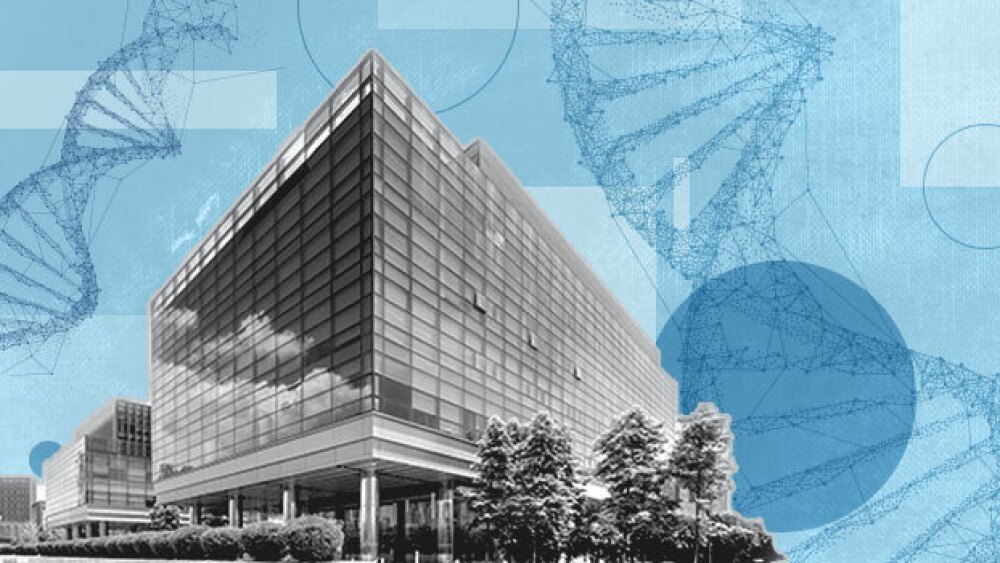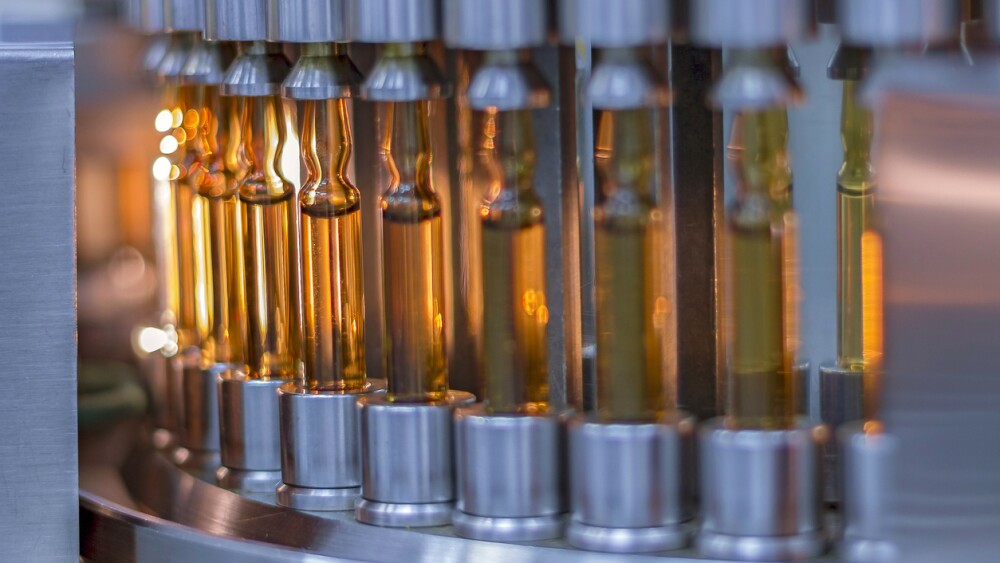The Janssen Pharmaceutical Companies of Johnson & Johnson announced updated results from the Phase 1/2 MonumenTAL-1 study of talquetamab, an investigational, off-the-shelf, bispecific T-cell engager antibody.
Results from the pivotal MonumenTAL-1 study, including first results from the Phase 2 portion, featured at the 2022 ASH Annual Meeting
NEW ORLEANS, Dec. 10, 2022 /PRNewswire/ -- The Janssen Pharmaceutical Companies of Johnson & Johnson announced today updated results from the Phase 1/2 MonumenTAL-1 study of talquetamab, an investigational, off-the-shelf (ready to use), bispecific T-cell engager antibody. Talquetamab targets both GPRC5D, a novel target on multiple myeloma cells, and CD3 on T cells, activating the body's immune system to fight this blood cancer.1 Results from the study suggest patients with relapsed or refractory multiple myeloma who received a median of five prior lines of therapy, including a proteasome inhibitor, an immunomodulatory agent, and an anti-CD38 antibody, achieved overall response rates (ORR) of 74.1 percent and 73.1 percent with subcutaneously (SC) administered recommended Phase 2 doses (RP2Ds) of 0.4 mg/kg weekly and 0.8 mg/kg every two weeks, respectively, with a median duration of response (DOR) of nine months or longer.2 Data from this investigational trial were featured during the American Society of Hematology (ASH) Annual Meeting as an oral presentation and highlighted in an ASH press briefing on Saturday, December 10, 2022 (Abstract #157).2
"The responses observed in the MonumenTAL-1 study suggest the clinical potential of talquetamab in the treatment of many patients who are triple-class refractory," said Ajai Chari, M.D., Professor of Medicine, Hematology and Medical Oncology, Icahn School of Medicine, Mount Sinai, and principal study investigator.† "The results of this study indicate the potential of this treatment for heavily pretreated patients who have exhausted currently approved therapies."
Results from the Phase 1 portion of the MonumenTAL-1 study were also published in The New England Journal of Medicine on December 10, 2022.
The ORR to talquetamab treatment was similar across both dose schedules.2 With a median follow-up of 14.9 months (range 0.5+ to 29.0), 74.1 percent of patients treated at the SC 0.4 mg/kg dose administered weekly (QW) achieved a response, 59.4 percent achieved a very good partial response (VGPR) or better, 33.6 percent achieved a complete response (CR) or better and 23.8 percent achieved a stringent complete response (sCR).2 The median progression free survival (PFS) was 7.5 months (95 percent CI, 5.7–9.4) at the 0.4 mg/kg QW dose.2 At the SC 0.8 mg/kg dose administered every two weeks (Q2W), 73.1 percent of patients achieved a response, 57.2 percent achieved a VGPR or better, 32.4 percent achieved a CR or better, and 20 percent achieved a sCR at a median follow-up of 8.6 months (range 0.2 to 22.5).2 Due to shorter follow-up in the 0.8 mg/kg Q2W dose cohort, the median PFS is not yet mature.2 Median DOR was nine months or longer in all groups, and longer DOR was observed in those patients who achieved a CR or better.2 There were no significant differences in ORR in subgroup analysis including prior lines of therapy, refractoriness to prior therapy and cytogenetic risk at baseline.
"These data represent the importance of engaging T cells via CD3 and targeting GPRC5D – a tumor associated antigen which is overexpressed in multiple myeloma cells – for the treatment of patients with relapsed or refractory disease," said Sen Zhuang, M.D., Ph.D., Vice President, Clinical Research and Development, Janssen Research & Development, LLC. "Following our recent Biologics License Application submission to the U.S. FDA, we look forward to working with the agency to make this available as a treatment option in the short term and continuing our longer-term investigations of talquetamab as we aim to develop additional options for patients with this complex blood cancer."
An additional cohort was studied to determine response to talquetamab at either dose schedule after previous T-cell redirection therapy, either a CAR-T or CD3 bispecific antibody. Patients in this cohort were younger, had a higher prevalence of high-risk cytogenetics, and had received a median of six prior lines of therapy (range, 3 to 15).2 Among these patients, 70.6 percent received prior CAR-T-cell therapy and 35.3 percent received prior bispecific antibody therapy.2 At a median follow-up of 11.8 months (range 1 to 25.4), 62.7 percent of patients with prior T-cell redirection therapy achieved a response. An ORR of 72.2 percent (95 percent CI, 54.8–85.8) was observed in patients with prior CAR-T-cell therapy and 44.4 percent (95 percent CI, 21.5-69.2) in patients with prior bispecific antibody treatment.2 The safety profile was comparable in patients with and without prior T-cell redirection therapy.2
No new safety signals were identified with longer follow-up in Phase 1 or Phase 2 of the MonumenTAL-1 study.2 The most common adverse events (AEs) at the SC 0.4 mg/kg QW dose were cytokine release syndrome (CRS) (79 percent; 2.1 percent grade 3/4), skin-related AEs (55.9 percent; all grade 1/2) and nail-related AEs (51.7 percent; all grade 1/2).2 The most common AEs at the SC 0.8 mg/kg Q2W dose were CRS (72.4 percent; 0.7 percent grade 3/4), skin-related AEs (67.6 percent; 0.7 percent grade 3/4) and dysgeusia (46.2 percent; not applicable).2 CRS incidents were mostly grade 1/2 and largely confined to the step-up doses and first full dose.2 The incidence of infection was 57.3 percent at the SC 0.4 mg/kg QW dose and 50.3 percent at the SC 0.8 mg/kg Q2W dose, with 16.8 percent and 11.7 percent grade 3 or higher, respectively.2 One patient in each dose cohort died due to COVID-19 infection.2
Most high-grade hematologic AEs were cytopenias, which were generally limited to the first few cycles of treatment.2 Neutropenia was observed in 34.3 percent of patients treated at the SC 0.4 mg/kg QW dose (30.8 percent grade 3/4) and 28.3 percent of patients treated at the SC 0.8 mg/kg Q2W dose (22.1 percent grade 3/4).2 Thrombocytopenia was observed in 27.3 percent of patients treated at the SC 0.4 mg/kg QW dose (20.3 percent grade 3/4) and 26.9 percent of patients treated at the SC 0.8 mg/kg Q2W dose (16.6 percent grade 3/4).2 At the SC 0.4 mg/kg QW dose, 4.9 percent of patients discontinued treatment due to AEs; 8.4 percent had dose delays and 14.7 percent had dose reductions.2 At the SC 0.8 mg/kg Q2W dose, 6.2 percent of patients discontinued treatment due to AEs; 13.8 percent had dose delays and 6.2 percent had dose reductions.2
About Talquetamab
Talquetamab is a first-in-class, off-the-shelf (ready to use), investigational bispecific T-cell engager antibody targeting both GPRC5D, a novel multiple myeloma target, and CD3, a primary component of the T-cell receptor.2 CD3 is involved in activating T cells, and GPRC5D is highly expressed on multiple myeloma cells.3,4
Talquetamab, which is given by subcutaneous injection, is currently being evaluated in the Phase 1/2 MonumenTAL-1 clinical study for the treatment of relapsed or refractory multiple myeloma (NCT03399799), and in combination studies RedirecTT-1 (NCT04586426), TRIMM-2 (NCT04108195), TRIMM-3 (NCT05338775), MonumenTAL-2 (NCT05050097) and MonumenTAL-3 (NCT05455320).
On December 9, 2022, Janssen submitted a Biologics License Application to the U.S. Food and Drug Administration (FDA) for talquetamab for the treatment of patients with relapsed or refractory multiple myeloma. Talquetamab received Breakthrough Therapy designation from the U.S. FDA in June 2022 for the treatment of adult patients with relapsed or refractory multiple myeloma, who have previously received at least four prior lines of therapy, including a proteasome inhibitor, an immunomodulatory agent, and an anti-CD38 antibody. In May 2021 and August 2021, talquetamab was granted Orphan Drug designation for the treatment of multiple myeloma by the U.S. FDA and the European Commission, respectively. In January 2021, talquetamab received a PRIME designation by the European Commission.
About Multiple Myeloma
Multiple myeloma is an incurable blood cancer that affects a type of white blood cell called plasma cells, which are found in the bone marrow.5 In multiple myeloma, these plasma cells change, spread rapidly and replace normal cells in the bone marrow with tumors.6 In 2022, it is estimated that more than 34,000 people will be diagnosed with multiple myeloma, and more than 12,000 people will die from the disease in the U.S.7 While some people diagnosed with multiple myeloma initially have no symptoms, most patients are diagnosed due to symptoms that can include bone fracture or pain, low red blood cell counts, tiredness, high calcium levels, kidney problems or infections.8
About the Janssen Pharmaceutical Companies of Johnson & Johnson
At Janssen, we're creating a future where disease is a thing of the past. We're the Pharmaceutical Companies of Johnson & Johnson, working tirelessly to make that future a reality for patients everywhere by fighting sickness with science, improving access with ingenuity, and healing hopelessness with heart. We focus on areas of medicine where we can make the biggest difference: Cardiovascular, Metabolism & Retina; Immunology; Infectious Diseases & Vaccines; Neuroscience; Oncology; and Pulmonary Hypertension.
Learn more at www.janssen.com. Follow us at @JanssenGlobal. Janssen Research & Development, LLC is one of the Janssen Pharmaceutical Companies of Johnson & Johnson.
†Dr. Chari has served as a consultant to Janssen; he has not been paid for any media work.
Cautions Concerning Forward-Looking Statements
This press release contains "forward-looking statements" as defined in the Private Securities Litigation Reform Act of 1995 regarding product development and the potential benefits and treatment impact of talquetamab. The reader is cautioned not to rely on these forward-looking statements. These statements are based on current expectations of future events. If underlying assumptions prove inaccurate or known or unknown risks or uncertainties materialize, actual results could vary materially from the expectations and projections of Janssen Research & Development, LLC or any of the other Janssen Pharmaceutical Companies and/or Johnson & Johnson. Risks and uncertainties include, but are not limited to: challenges and uncertainties inherent in product research and development, including the uncertainty of clinical success and of obtaining regulatory approvals; uncertainty of commercial success; manufacturing difficulties and delays; competition, including technological advances, new products and patents attained by competitors; challenges to patents; product efficacy or safety concerns resulting in product recalls or regulatory action; changes in behavior and spending patterns of purchasers of health care products and services; changes to applicable laws and regulations, including global health care reforms; and trends toward health care cost containment. A further list and descriptions of these risks, uncertainties and other factors can be found in Johnson & Johnson's Annual Report on Form 10-K for the fiscal year ended January 2, 2022, including in the sections captioned "Cautionary Note Regarding Forward-Looking Statements" and "Item 1A. Risk Factors," and in Johnson & Johnson's subsequent Quarterly Reports on Form 10-Q and other filings with the Securities and Exchange Commission. Copies of these filings are available online at www.sec.gov, www.jnj.com or on request from Johnson & Johnson. None of the Janssen Pharmaceutical Companies nor Johnson & Johnson undertakes to update any forward-looking statement as a result of new information or future events or developments.
# # #
|
____________________ |
|
1 Pillarisetti K et al. Blood. 2020;135(15):1232-1243. |
|
2 Pillarisetti K et al. Blood. 2020;135(15):1232-1243. |
|
3 Labrijn AF et al. Proc Natl Acad Sci USA. 2013;110:5145. |
|
4 Cohen, Y., et al. Hematology. 2013 Nov; 18(6):348-51. |
|
5 Rajkumar SV. Multiple myeloma: 2020 update on diagnosis, risk-stratification and management. Am J Hematol.2020;95(5):548-5672020;95(5):548-567. http://www.ncbi.nlm.nih.gov/pubmed/32212178. |
|
6 National Cancer Institute. Plasma Cell Neoplasms. Accessed September 2022. https://www.cancer.gov/types/myeloma/patient/myeloma-treatment-pdq. |
|
7 American Cancer Society. "Key Statistics About Multiple Myeloma." Available at: https://www.cancer.org/cancer/multiple-myeloma/about/key-statistics.html#:~:text=Multiple%20myeloma%20is%20a%20relatively,men%20and%2015%2C370%20in%20women). Accessed September 2022. |
|
8 American Cancer Society. "What Is Multiple Myeloma?" Available at: https://www.cancer.org/cancer/multiple-myeloma/about/what-is-multiple-myeloma.html. Accessed September 2022. |
Media Contacts:
Satu Glawe
+49 (172) 294-6264
Brian Kenney
(215) 620-0111
Investor Relations:
Raychel Kruper
(732) 524-6164
U.S. Medical Inquiries:
+1 (800) 526-7736
![]() View original content to download multimedia:https://www.prnewswire.com/news-releases/janssen-presents-new-data-for-talquetamab-a-first-in-class-gprc5dxcd3-bispecific-antibody-suggesting-durable-responses-in-patients-with-heavily-pretreated-multiple-myeloma-301699753.html
View original content to download multimedia:https://www.prnewswire.com/news-releases/janssen-presents-new-data-for-talquetamab-a-first-in-class-gprc5dxcd3-bispecific-antibody-suggesting-durable-responses-in-patients-with-heavily-pretreated-multiple-myeloma-301699753.html
SOURCE Janssen Oncology





